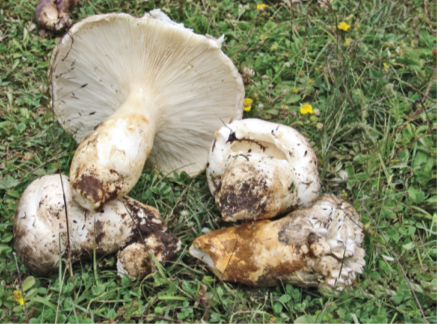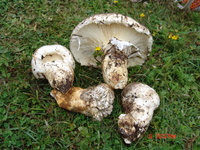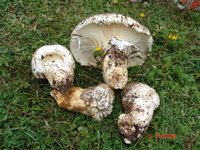
Local name: Chhagoey Shamong
Edibility: Edible
Habitat: Terrestrial and solitary to scattered and sometimes gregarious.
Description: Cap: 10-30 cm wide, convex becoming nearly flat when matured, sticky when young (but soon dry) Grey to dirty white colour of the cap. The cap can be peeled easily like the leathery thin skin. Hymenophore: Sub-decurrent gills, close, whitish, sometimes discolouring greyish with age. Stem: Up to 18 cm tall and sometimes up to 8 cm wide, tapering to the base and usually rooting somewhat, sometimes almost completely underground, whitish above the ring, brownish below with soil attach. Flesh: White and not changing on exposure. Spore Print: White.
Comments: Catathelasma imperiale is a conifer-loving species defined by its large size, its gills (which begin to run down the stem), its white spore print, its stem (short, thick and rooting, with a tapered base), its sticky cap, its mealy odour, and its double ring. Catathelasma ventricosum is very similar. Confusion with the matsutake, Tricholoma magnivelare, as well as its close relatives in the Tricholoma caligatum species group, is likely to happen but, neither of these species have gills that run down the stem, a double ring, or a long and rooting stem base-and the matsutake has a characteristic spicy and fragrant odour.




